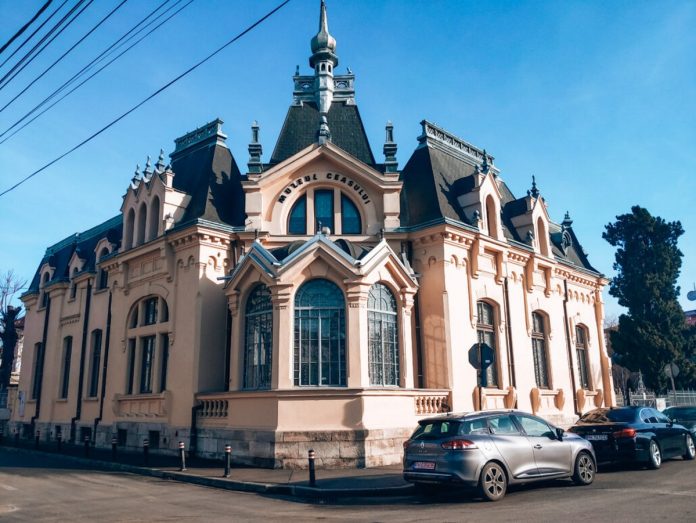A large icon unique in Romania, which was brought from Jerusalem 204 years ago and consists of more than 200 scenes from the Old and New Testament, is in Ploiesti, at the ‘Town-dweller House of the 18th-19th Centuries’ Museum, write Agerpres.
The cultural institution operates in the oldest building in Ploiesti, built around 1785, the building that used to be inhabited by merchant Ivan Hagi Prodan and his wife Marita.
„Hagi Prodan came from Bulgaria, north of the Danube, from a copper exploitation area of Bulgaria, where he learned the art of tinkers. He was a prosperous businessman, he even got to be the head of the guild of tinsmiths.
He came to our area following the Ottoman persecution and ended up in Ploiesti, where he married Marita, who received the house as dowry from her father. They moved here together, with his copper pot business, with a handful of gypsy slaves who worked for him in the basement of the house,” curator of the museum Mihaela Ionita told AGERPRES.
According to her, Hagi Prodan undertook a pilgrimage to the Holy Places (hagialac, in Romanian) in 1819, on which occasion he brought from Jerusalem a large icon, called the hagiu (pilgrim) icon, a unique piece in Romania.
„In 1819, Ivan Prodan undertook a pilgrimage to the Holy Places (hagialac), according to a custom of the time, when a group of 20-30 wealthier men from the city went to Mount Athos and Jerusalem where, among other things, they participated in the Resurrection service and received the baptism in the water of the Jordan.
On their return home they were called ‘hagii’ [pilgrims], a title given to people who undertook such a journey. From this pilgrimage, Hagi Prodan brought a series of religious objects, among which today a large icon painted on canvas („Jerusalem”) and a wooden candlestick are preserved,” explains Mihaela Ionita.
According to custom, the pilgrimage took place before the Easter holidays, and those who went on such a journey prepared themselves beforehand, in the sense that they confessed and repented. They did the same when they reached the Holy Land, to be prepared in case they failed to return home.
The hagiu (pilgrim) icon, which is two metres long and about 1.40 metres high, is painted in oil on canvas and consists of more than 200 scenes from the Old and New Testament. In the 1990s it was restored.
„The composition is typical, particularly large: on the left and right two large ‘paintings’ with the central scenes of the ‘Mother of God with Child,’ on the left, and Jesus on the right, framed by a series of scenes and medallions. Between them, centrally, numerous scenes from the New Testament, most of them not separated within the composition.
The entire composition is enclosed by 59 medallions with scenes from the Old Testament, isolated from the rest of the pictorial screen by Baroque-style gold-leafed loops outlined in black,” says the museum’s curator.
Thus, the canvas was initially treated with a uniform layer of vermilion colour, over which the painting ensemble was worked, the ensemble enclosed in a linear border in dark Prussian blue, punctuated by stars executed in gold leaf, composed of 8 intersecting lines (a folk art motif), arranged approximately 3 cm apart.
The outer medallion band is painted on a permanent red to vermilion background. The two main side scenes – ‘Mother of God with Child’ on the left and Jesus on the right – have a gold leaf background.
„Immediately below this scene, painted in permanent red, there is an area of scenes continuing one from the other, without being delimited by borders, a large composition comprising, on the left, the Heaven and the Paradise, with a group of saints and the Ascension of Jesus, and from the middle area to the right – the Last Judgement towards which Abraham is pointing (…).
In the perimetre area of the central space, there are scenes painted representing the great feasts of the year, such as the Nativity of the Lord, the Baptism, the Entry into Jerusalem, the Ascension to Heaven, Mount Tabor, Judas and his betrayal, the Assumption of the Virgin Mary, the Martyrdom of Stephen, the first martyrs of Christianity, these scenes are not delimited one from another. The only scene delimited by a rectangular border on the lower right side depicts St. George and St. Demetrius,” says Mihaela Ionita.
The centre of the whole composition is occupied by the interior of two cathedrals, one showing the tomb of Jesus, and in the lower part, under a dome painted in blue, the silhouette of Jesus, the other showing St. Peter in the midst of a crowd of saints with lighted candles.
The central space of the composition is bordered in the upper part by 16 medallions, each containing two or three saints painted in miniature on a blue background and interior inscriptions in black Cyrillic script.
One of the images in this icon is atypical, and those who have studied it believe that it shows Hagi Prodan himself, whom the museographers do not have in any of the pictures.
According to her, in that period, several such icons were made, which are spread all over the world, the one in the museum being the only one existing in Romania.


